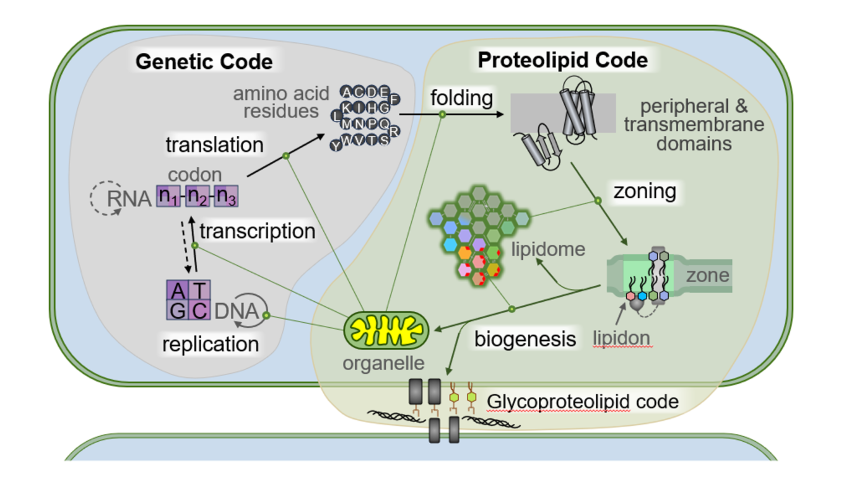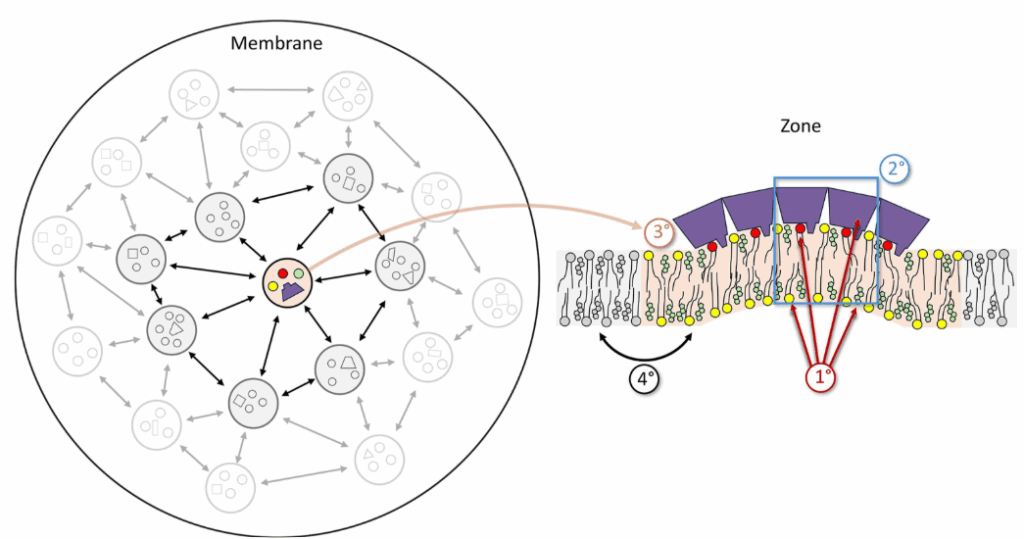
We are a group of academics who study the proteolipid code; arguably the largest cellular code in terms of mass, volume, and number of components. The proteolipid code lives in a topological space and is responsible for the subcellular organization of proteins, lipids, and other biomolecules, as well as the interactions of cells to form tissues and organs. It incorporates the ubiquitin, glycan, and phosphoinositide codes, among others.

As a scientific theory, the proteolipid code challenges previous ideas such as the unmodified lipid raft theory (https://doi.org/10.1038/42408), modified lipid raft theories (10.1101/cshperspect.a041395), and the picket-and-fence/tiered mesoscale model (10.1016/j.tibs.2011.08.001). These fail to capture the full complexity of biological membranes and are inconsistent with thermodynamics or make other elementary blunders. In contrast, the proteolipid code accounts for the thermodynamic coupling of distinct membrane regions (zones), and is general enough to encompass eukaryotic, prokaryotic, and viral membranes.

The proteolipid code calls for a reassessment of lipid function that supersedes the idea of “structural” and “signaling” lipids. There are lipid fingerprints, isleprints, voids, glue, antagonists, codons, and more. Each lipid group plays a unique role in organizing membrane components. Our framework could someday be used to design new therapies that control and target membrane zonation, explain how brains work, and inform realistic simulations of life.

Figure 2b from: Kervin TA, Overduin M. BMC Biol. 2024. doi: 10.1186/s12915-024-01849-6
